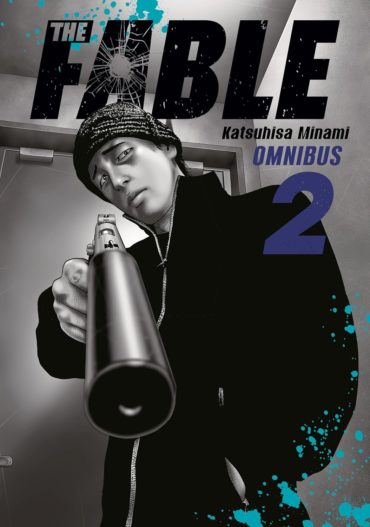The Fable Omnibus 2 Review
This second omnibus collection telling the story a hitman-at-rest delves into new territory, including stalking, working, and soap operas.
The Fable, a hitman who has been told to lie low for a year in Osaka under the name of Akira Sato, is still adjusting to life as a normal person, living next door to his old getaway driver, who is pretending to be his sister under the fake name of Yoko. He’s adopted a pet parrot which he has named Captain, and now has to get used to the fact that his favourite comedian, Jackal Tomioka, has taken a serious acting role in a soap.
Meanwhile, he also has to try and find a job. After failing a series of interviews, not helped by his terrible CV where he lists his birthday as April Fools’ Day and his interests as “Jackal Tomioka”, he bumps into a local woman he has met before named Misaki Shimizu. It turns out she works for a small design company, and she helps him get a job for the firm as a delivery driver, albeit below minimum wage.
Things become interesting at work however when Fable/Akira clearly spots that one of the other members of staff, Etsuji, is a pervert who has been using hidden cameras to upskirt Misaki. Rather than telling anyone, he sorts things out his own way, such as when all the staff have dinner, he flicks away a secret camera using a chicken bone under the table. This doesn’t stop Etsuji, however, who steals Misaki’s keys, breaks into her flat, wears her underwear and discovers that she used to be a gravure idol. This becomes more of an issue when one of the members of the gang that is hiding Fable/Akira plans to come up with his own call girl business.
Once more, Katsuhisa Minami’s manga is able to combine various elements to create a story that ranges from the thrilling to the comic. To return to the dinner scene where Fable/Akira discovers that Etsuji is upskirting Misaki, after he spots the camera, Fable/Akira does some odd things at the dinner table that everyone else finds weird, such as eating the skin that his edamame beans came in. This leads to a discussion about him being poor as a kid, and then for him to start eating chicken bones, one of which he uses to deflect Etsuji’s camera. It is both a comic scene where others at the table are disturbed and also intrigued by Fable/Akira’s odd habits, but we also get a bit of drama as we learn of our hero’s origins. It also leads to more disturbing scenes when Etsuji breaks into the flat and discovers Misaki’s early, more adult career.
There has been a change in the production of the manga. While we still have Abigail Blackman as the cover designer, Adam Hirsch as the translator, and Arbash Mughal as letter, and they all do their jobs well, Julia Murphy is no longer one of the editors, leaving Ben Applegate in charge of the print version that I am reviewing. For what reason this change was made, I don’t know, but there appears to be no drop in quality when it comes to how Kodansha have put this manga together.
It is clear however that in terms of plot, Misaki is going to find herself in more danger. How Fable/Akira deals with it is something we will have to wait to find out in the next omnibus edition which is due out from Kodansha in August.
Our review copy from Kodansha was provided by Diamond Book Distributors.


